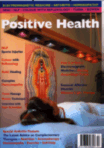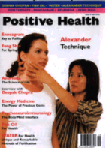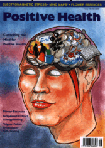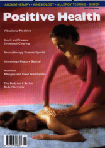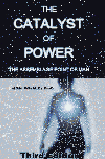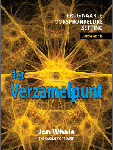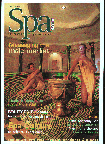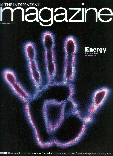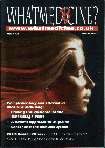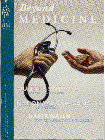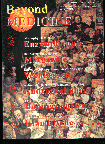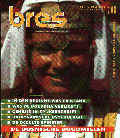1) This Page is A Simple “Self Help” Tool Kit to Acquire & Develop Deeper Understanding of One’s Self.
2) A Support to Provide Restored Emotional and Physical Health.
3) Provide the Requirements for Respectable Interactions in Relationships and with Other Individuals Within Our Environment.
4) Provide the Necessary Knowledge Required to Establish A Long Term Stable and Near Central Assemblage Point Location and Entry Angle.
Section 1: The Scale Of Emotional Health
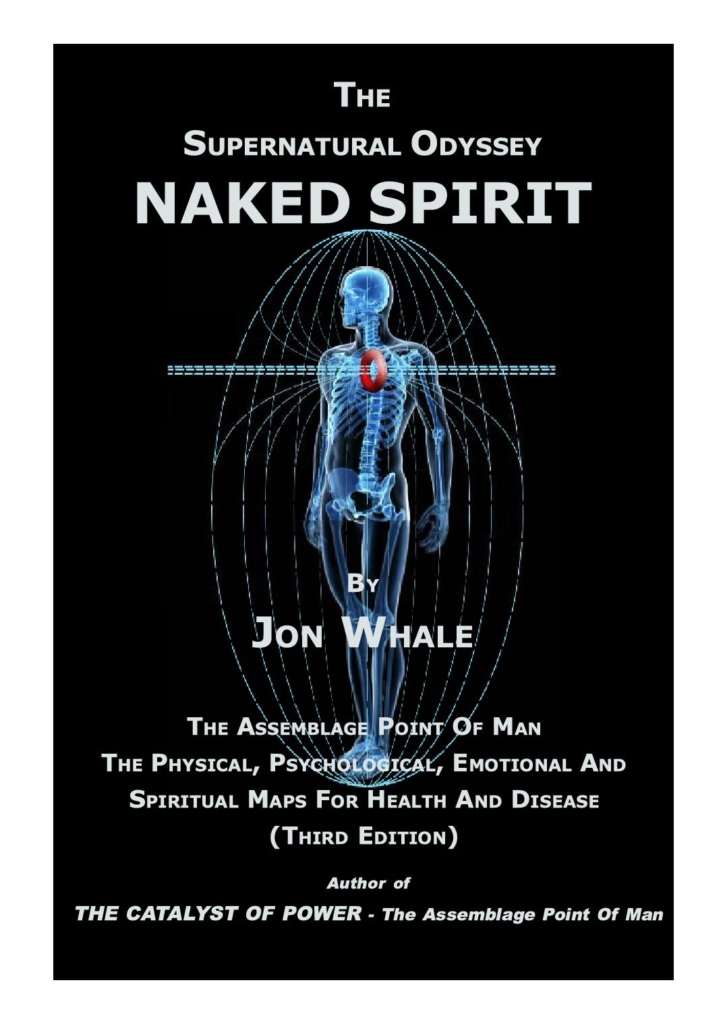
Extracts from Chapter 4: ‘Seven Attributes of Power’ from the book entitled: Naked Spirit
The Supernatural Odyssey
By
Jon Whale The Physical, Psychological, Emotional And Spiritual Maps For Health And Disease
Including The Assemblage Point Blueprints Contains 10 Chapters with 3 Appendixes, Supported with 271 IllustrationsISBN: 1-873483-06-6
The following description of the scale of emotional health is a rudimentary overview and exposure, that I know will serve as a most useful map. Individuals who inhabit the upper positive levels of emotional health can employ or drop into any level including the negative levels if required to do so. They will only stay there just as long as they need to achieve a solution. The negative levels can be chronic, i.e. long-standing. Anyone who habituates to any of them may find it arduous to find authentic help or techniques to rise to the higher, positive levels. They are often trapped in the chronic negative levels for the duration of their life. Nevertheless, using this map, many of you will be able to pinpoint your location and that of family, friends and acquaintances. With it there is no doubt that using common sense and the application of the Assemblage Point methods, you will be able to navigate your way out of the wilderness and provide positive assistance to others to find their way through. The list starts at the bottom of the ladder, the lowest level of emotional health.
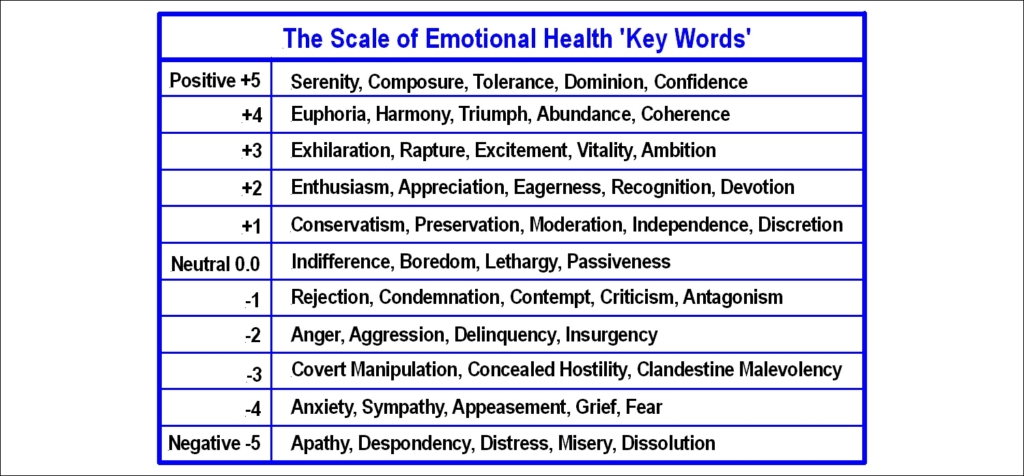
Negative – 5. Apathy, Despondency, Distress, Misery, Dissolution
The lowest level of Emotional Health.
• All emotions are turned off or chemically attenuated.
• The core of antisocial behaviour.
• Many are drug addicts, alcoholics, compulsive gamblers, suicidal psychotics, vagrants, petty drug dealers and lawbreakers, failures, bankrupts, social dependants, institutionalised inmates, the minimalist, or apathetic intellectuals.
• They see no point in owning anything, run up debts which are seldom paid
• Allow property and possessions to decay.
• Feel helpless and unable to care for themselves.
• Slowly self-destruct, bringing down everyone around them.
• Rely on handouts and charity.
• Never improve, keep making the same mistakes.
• Are often actively supported and subsidised by individuals lower on the scale at – 4.
• They are fed up with life, the world and society, which are to them superficial and no longer interesting.
Negative – 4. Anxiety, Sympathy, Appeasement, Grief, Fear
• In deep fear.
• Here individuals and groups smother creativity and enthusiasm by using pseudo-kindness, leniency, sympathy and generosity.
• This creates, and fosters in others, the lowest negative emotional level of apathy.
• They collect and help losers, the sick, down and outs or good causes for the purpose of using them to demonstrate their merciful and compassionate generosity and good intentions.
• These self-righteous strategies are used to induce feelings of guilt and shame in people of higher positive emotional levels.
• They have an overwhelming fear of hurting others and they never turn their back on anyone they deem is in need.
• They provide infinite justifications for failure, they presume nobody is all bad and always give the benefit of the doubt.
• Pampering everyone, waiting on them, doing favours for them, refusing to accept anything in return, they prevent unfortunate individuals from regaining self reliance, self worth and dignity.
• Their children are treated in exactly the same way. This results in those children wanting continual sympathetic attention and so they are always crying, screaming, fighting, or throwing tantrums to get it, never learning to entertain nor educate themselves.
• They cling to sentimentality, grief and pain to protect themselves and attract pity, sympathy and empathy.
• They constantly worry about health, accidents, crime and disasters.
• Paranoid and suspicious, nearly everything is threatening: germs, disease and criminals are just around every corner waiting to strike.
• So they never take chances and are too careful as they never know what might happen.
• Life has treated them terribly, they whine, are melancholic, dwell in the past, feel betrayed.
• Everything is painful. No money, no job and nobody loves them.
• They are afraid of hurting others and are caught in indecision.
• Show blind loyalty and compulsive agreement.
Negative – 3. Covert Manipulation, Concealed Hostility, Clandestine Malevolency
• This is probably the most populated chronic emotional level in these times.
• Problem: difficult to immediately assess that they are in this category; only time reveals this to individuals higher on the scale as their game strategy unfolds.
• Those in chronic grief and apathy ( – 4 and – 5), never comprehend their strategies.
• Always present a cheerful facade, often with a nervous laugh and constant smile.
• Appear calm, pleasant and resourceful.
• Seem to be sympathetically or morally concerned in politely asking probing personal questions about you, your work, your relationships, your sex life, your politics or your religion.
• Their anger remains invisible, yet they are petrified of anyone in anger.
• Jealous and extremely dangerous.
• Cruel cowards.
• Manipulative, they engage in gossip readily but have no qualm in covertly twisting facts around, to knife into the back whenever, wherever and to whomever they can.
• When confronted, they change the subject to move away from the point and are always rewriting history or changing the truth about past events to suit their current position. They will do and say anything to avoid exposure.
• Through their appearance, word, propaganda or advertising they present themselves, their services or products as being ‘so nice, so charming, so condescending and so helpful’.
• For objectives that they are too lazy or fearful to undertake themselves, they covertly manipulate and subjugate individuals at chronic -4, -5 and -2 to do their bidding and dirty work.
• Their targets are any individual, families, groups, companies or nations that they consider high on the scale (e.g.+3’s; +4’s etc.), attempting to bring them down to chronic appeasement, grief and apathy (- 4 and – 5 levels). They would like everyone on the planet at this level so that they can feel power.
• They have little time for children unless they can use them as an introduction or a weapon for manipulation towards their strategy of introverting others down to -3 and minus 4.
• Their unstated aim is to cause ruin, discredit achievements and split up relationships.
• At this they can be very successful and gloat when their victims go down into the lower chronic levels of – 4 and -5.
• Males at this level subconsciously know their fearful limitations. They can be slothful, but have a need to control and suppress women down to the -4 and -5 levels so that they can feel secure in their sexuality, (as also happens in males at -1 and -2).
• Males at this level occupying influential or powerful offices can instigate acts of terrorism and war.
• You cannot trust anyone at this level with your health, your money, your reputation, your safety, your husband, your wife, your children, your business, your company, your country, or this planet.
Negative – 2. Anger, Aggression, Delinquency, Insurgency
• Individuals at this chronic level are consumed with animosity and are furious.
• They dominate and intimidate others into submission and obedience.
• They blame everyone else for their problems.
• They collect grudges to justify their anger and dump them on anyone or anything that passes their way.
• They destroy property, social conveniences and lives.
• Everyone they meet is wrong or obstructing their ambitions.
• Expressing no kindness, no consideration, being blatantly dishonest and disloyal, they lie, use intimidation and ambiguity to destroy creativity and satisfaction.
• They cause sabotage by deliberately instigating situations or circumstances where others will fail; afterwards they accept no blame, excuse or explanation.
• They handle children by tyranny, sometimes with brutal punishment to force them, by means of pain, into what they want.
• Not being interested in any viewpoints unless it reinforces their position, they do not listen and continually interrupt others’ discussions.
Negative – 1. Rejection, Condemnation, Contempt, Criticism, Antagonism
• Interacting with a person that habituates this level can be amusing for a short time, any longer and it can become boring or enraging.
• They enjoy, even laugh at, the misfortune of others and never play for the pleasure.
• They want to dominate every activity involving others.
• Being resentful and mocking, their subsistence depends on finding and engaging a contestant.
• Children are there for them to torment and provoke.
• They are insensitive, undiplomatic and unsporting.
• They love to argue and dispute everything and get a kick out of reducing others to acute anger and lower.
• They never listen, continually interrupt, never permitting the other person to establish their point.
• They twist facts to defend and satisfy their own reality, doing their utmost to sabotage the position of others.
Neutral 0.0. Indifference, Boredom, Lethargy, Passiveness
• They are observers being indifferent, mildly pleasant, inoffensive, purposeless and unconcerned about any issue.
• Everything is too much trouble.
• With poor concentration and no ambition, they never achieve any outstanding feat.
• Not having any purpose, being lazy and careless, neither content nor discontent, they are not particularly helpful and never intimidating.
• Like all of the lower negative levels, they want more affluence but cannot consent to own much.
• Largely unnoticed, they amble along stuck at some routine job never upsetting anyone and are accepted by most people.
Positive + 1. Conservatism, Preservation, Moderation, Independence, Discretion
• The conformist, reticent individual who considers everything with careful deliberation.
• They demand proof before believing or acting.
• They invariably take the soft, safe option to maintain contentment and rely on the authorities to protect them and do their prosecuting.
• They resist change and discourage exploration and innovation.
• They are not very tolerant of others in the chronic negative levels, insisting that laws should be made to contain them.
Positive + 2. Enthusiasm, Appreciation, Eagerness, Recognition, Devotion
• The genuinely helpful and constructive active person with good personal conviction.
• They have a quiet sense of wellbeing and look forward to the day’s activities and work.
• They can express a wide range of emotions when called for.
• Although not yet a leader, not wanting to take sides, they are active people who inspire others to action.
• Are always willing to accept more responsibility towards a larger horizon.
• They like a good standard of living.
• They can spend time with the low emotional levels of people without getting depressed, compulsively sympathetic or exhausted.
Positive + 3. Exhilaration, Rapture, Excitement, Vitality, Ambition
• Charismatic personality.
• Attract people without effort.
• Loved by almost everyone.
• Can maintain a strong, sustained interest in their subjects.
• Preoccupied with involvement and creativity, they never start something and give in easily.
• They are not grasping nor greedy, but are not afraid of possessions.
• Not able to tolerate gossip or defamation.
• They expect honest facts and, if not forthcoming, they cease communication.
• They dislike generalities, insinuations and assumptions.
• Have broad spectrum and novel interests.
• They can conceive influential plans and ideas that thrust toward a better future for themselves and others.
• For them making a fortune is easy and can normally embrace abundant ambitions for survival.
Positive + 4. Euphoria, Harmony, Triumph, Abundance, Coherence
• These individuals believe and respect the rights of others.
• Honesty, affection, ethics, trustworthy, diplomatic, confidential, discrete, discriminating, communicative, are some of the credits of this level.
• They do not interfere with or damage others’ lives, business or personal affairs, being more concerned about the survival and future of society and the environment.
• Always striving for higher standards for people at lower levels on the scale, they listen to others and understand them easily and can help low level people upwards, without being critical or derogatory.
• Enjoying and encouraging children to express themselves, they care for their mental and physical well being.
• They direct their interests and efforts to improve culture and set up institutions and situations for the deprived to have a better chance.
• This inspiring high level is contagious, promoting easily understood communications containing constructive solutions.
• Although they are targets to be shot at by individuals, agencies and institutions lower on the scale, they will not settle for mediocrity nor tolerate poverty.
• They accumulate more than their immediate needs.
• If they are brought down, they recover easily by finding diverse means to achieve their objectives.
Positive + 5. Serenity, Composure, Tolerance, Dominion, Confidence
• This is the highest emotional level.
• The benevolent hero and champion.
• Individuals at this level are rare and priceless.
• They can look at new ideas, change viewpoints, being intuitively spontaneous, light-hearted and humorous.
• Neither modest nor egotistical, avoiding snooping and investigation.
• They know their abilities and what they are worth.
• They like themselves and do not care what others think.
• They can follow orders but under no circumstances will they compromise their ethics, but if forced to do so will fight with determination.
• Should they decide to do something it will be done and should anyone try to stop them, they do so at their own peril.
• They never hold grudges and stay on good terms with most people by reserving a magnanimous and light-hearted nature.
• They excel, having no need to control or dominate people to satisfy their own ego.
• Their enthusiasm and confidence inspires others to reach higher levels and do things for themselves.
• They possess tremendous personal power to calm worried or troubled people and find resolutions to the world’s problems.
Using The Scale Of Emotional Health
It is a simple matter to integrate the eleven emotional levels of health into your life. Make a list of people that you have known or know well. They can be relations, neighbours, colleagues, politicians, prime ministers, presidents, historical characters, TV and other media personalities, news reporters and commentators; in fact anyone that you know, living or dead. For example, many television soap operas comprise characters acting in the chronic low levels of emotional health on the scale; while the script writers of situation comedies often use characters acting in the higher levels of emotional health.
When you have made the list, compare each person’s behaviour to the eleven levels of emotional health to determine their chronic or long standing emotional level.
When I first tried this exercise, I made a list of all of the people past and present who directly and indirectly participated or affected my life. I was very disheartened to discover that over seventy percent of those on my list categorised in the chronic negative levels.
Previously, I scarcely knew anyone on the scale much higher than ‘chronic conservatism’. The reason for my resulting melancholy was partly due to my certainty of the rarity of people high on the scale of emotional health and the abundance of people low on the scale.
I was disappointed to discover that love and peace was not the solution. Extending these sentiments, showing others the ‘pink light’ of love and compassion only provided an invitation for individuals low on the scale, (negative minus 1, 2, 3, 4 & 5), to gain access and manipulate my inherent good nature. Before long I would find myself in their same negative states or below. Along with this came the realisation that I had frittered away many years of my life in the company of people in the chronic negative levels on the scale of emaotional health.
I have a conscience. Perhaps I was born with one. My error was to believe that everyone else also possessed a conscience. It was one of the greatest moments in my life when I realised this was not so. Suddenly I became able to expose all of the covert hostile minus three’s influencing and controlling my past, and understand where and why I went wrong. Several years passed before I had mastered the ability to spot and prevent individuals low on the scale from introverting me, ruining my affairs, family life, business and involving me in their schemes, problems and Drama Triangle of Persecutor – Victim – Rescuer games.
Jon Whale, Devon, UK. 2004.
Section 2: Enneagram Personality Types
Note from Jon Whale: Alongside with understanding and employing The Scale Of Emotional Health, I would like to recommend the study of Graphology (Handwriting Analysis) and also this book as a perfect complement for a complete actualisation of the human condition and the different personality types:
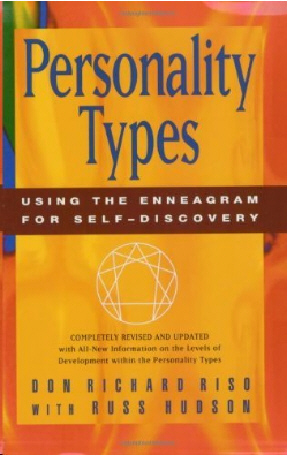
Personality Types: Using the Enneagram for Self-Discovery
Paperback – October 29, 1996
by
Don Richard Riso (Author), Russ Hudson (Author)
ISBN: 0046442798679
http://www.amazon.com/Personality-Types-Using-Enneagram-Self-Discovery/dp/0395798671
“The Enneagram is an extraordinary framework for understanding more about ourselves. No matter from which point of view we approach it, we discover fresh conjunctions of new and old ideas.” So writes Don Riso in this expanded edition of his classic interpretation of the Enneagram, the ancient psychological system used to understand the human personality. In addition to updating the descriptions of the nine personality types, Personality Types, Revised greatly expands the accompanying guidelines and, for the first time, uncovers the Core Dynamics, or Levels of Development, within each type. This skeletal system provides far more information about the inner tension and movements of the nine personalities than has previously been published. This increased specificity will allow therapists, social workers, personnel managers, students of the Enneagram, and general readers alike to use it with much greater precision as they unlock the secrets of self-understanding, and thus self-transformation.”
Free Online Tests to Discover Your Personality Type – Understanding the Enneagram
By using the Keywords above on various Search Engines one can find dozens of free online personality tests
Personality Type 1: The Reformer: The Idealistic. Orderly, Perfectionist, Intolerant Person
Childhood Origin: Disconnected from father-figure.
Basic Fear: Of being condemned.
Basic Desire: To be right.
Healthy Sense of Self: I am reasonable.
Characteristic Temptation: To be too personally obligated.
Characteristic Vice: Self-righteous anger – wrath.
Characteristic Virtue: Wisdom.
Hidden Complaint: I am right most of the time, the world would be a better place if people listened to what I tell them.
Key Defence Mechanisms: Repression, reaction formation, displacement, introversion, defafamtaion.
Direction of Integration: To Personality Type 7, The relaxed Reformer can release inflexibility and become more cheerful and relaxed.
Direction of Disintegration: To Personality Type 4, The stressed Reformer can become the furious self-destructive critic
Personality Type 2: The Helper: The Concerned, Helpful, Possessive, Manipulative Person
Childhood Origin: Ambivalent to father-figure.
Basic Fear: Of being unloved.
Basic Desire: To be loved.
Healthy Sense of Self: I am caring.
Characteristic Temptation: To be too well intentioned.
Characteristic Vice: Vain glory.
Characteristic Virtue: Disinterested charity.
Hidden Complaint: I am always loving, although people don’t love me as much as I love them.
Key Defence Mechanisms: Identification, reaction formation, denial, rejection.
Direction of Integration: Personality Type 4
Direction of Disintegration: Personality Type 8
Personality Type 3: The Motivator: The Self-Assured, Ambitious, Narcissistic, Psychopathic Person
Childhood Origin: Connected to mother-figure.
Basic Fear: Of being rejected.
Basic Desire: To be accepted.
Healthy Sense of Self: I am desirable.
Characteristic Temptation: To be too competitive.
Characteristic Vice: Sloth in self-development.
Characteristic Virtue: Proper love of self.
Hidden Complaint: I am a superior person, and other people are jealous of me.
Key Defence Mechanisms: Repression, projection, displacement.
Direction of Integration: To Personality Type 6, The relaxed Motivator can develop integrity and loyalty to doing a job well.
Direction of Disintegration: To Personality Type 9, The stressed Motivator can become deceitful and fraudulent, then bitterly passive
Personality Type 4: Romantic: The Artist, The Creative, Individualistic, Introverted, Depressive Person
Childhood Origin: Disconnected from parental-figures.
Basic Fear: Of being defective.
Basic Desire: To understand the self.
Healthy Sense of Self: I am intuitive.
Characteristic Temptation: To be too given to fantasy.
Characteristic Vice: Envy.
Characteristic Virtue: Emotional balance.
Hidden Complaint: I am different from others, and I feel I don’t really fit in.
Key Defence Mechanisms: Introjection, displacement, turning against the self.
Direction of Integration: Personality Type 1
Direction of Disintegration: Personality Type 2
Personality Type 5: The Thinker: The Perceptive, Analytic, Eccentric, Paranoid Person
Childhood Origin: Ambivalent to parental-figures.
Basic Fear: Of being overwhelmed.
Basic Desire: To understand the environment.
Healthy Sense of Self: I am perceptive.
Characteristic Temptation: To be too analytic.
Characteristic Vice: Avarice, covetousness.
Characteristic Virtue: Understanding.
Hidden Complaint: I am so smart that no one else can understand the things I understand or appreciate the things I know.
Key Defence Mechanisms: Displacement, projection, isolation.
Direction of Integration: To Personality Type 8,The relaxed Thinker or Observer can go out into the world and do something with the accumulated knowledge.
Direction of Disintegration: To Personality Type 7, The stressed Thinker or Observer can retreat, become aimlessly active, superficial, eccentric, and nervous.
Personality Type 6: The Loyalist: The Likable, Loyal, Dependent, Masochistic Person
Childhood Origin: Connected to father-figure.
Basic Fear: Of being abandoned.
Basic Desire: To have security.
Healthy Sense of Self: I am likable.
Characteristic Temptation: To be too dependent.
Characteristic Vice: Sloth in self-reliance.
Characteristic Virtue: Courage.
Hidden Complaint: I am dependable and I follow orders, although other people don’t.
Key Defence Mechanisms: Identification, displacement, projection.
Direction of Integration: To Personality Type 9, The relaxed Loyalist can realize that things can work out even if there doesn’t seem to be any security.
Direction of Disintegration: To Personality Type 3, The stressed Loyalist can become presumptuous, suspicious, buried in work, authoritarian, and even sadistic.
Personality Type 7: The Generalist: The Accomplished, Extroverted, Excessive, Manic Person
Childhood Origin: Disconnected from mother-figure.
Basic Fear: Of being deprived.
Basic Desire: To be satisfied.
Healthy Sense of Self: I am happy.
Characteristic Temptation: To be too acquisitive.
Characteristic Vice: Gluttony.
Characteristic Virtue: Gratitude.
Hidden Complaint: I am happy, although I would be a lot happier if I got everything I wanted.
Key Defence Mechanisms: Repression, externalization, acting out.
Direction of Integration: To Personality Type 5, The relaxed Generalist can first think and observe instead of dissipating energies; and then act in harmonious balance.
Direction of Disintegration: To Personality Type 1, The stressed Generalist can engage in lots of activities with an emphasis on lust and a striving for perfection; can lose lightness; can criticize and ridicule others that appears to oppose the Generalist.
Personality Type 8: The Leader: The Powerful, Expansive, Dictatorial, Destructive Person
Childhood Origin: Ambivalent to mother-figure.
Basic Fear: Of submitting to another.
Basic Desire: To be self-reliant.
Healthy Sense of Self: I am strong.
Characteristic Temptation: To be too self-sufficient.
Characteristic Vice: Lust.
Characteristic Virtue: Magnanimity.
Hidden Complaint: I am fighting for my own survival, and others would take advantage of me if I let them.
Key Defence Mechanisms: Repression, displacement, denial.
Direction of Integration: To Personality Type 2, The relaxed Leader or Boss can soften will and power to recognize other people; can want to help others and do so.
Direction of Disintegration: To Personality Type 5, The stressed Leader can become violent and aggressive, then brood and withdraw.
Personality Type 9: The Peacemaker: The Peaceful, Reassuring, Passive, Repressed Person
Childhood Origin: Connected to parental-figures.
Basic Fear: Of separation.
Basic Desire: To have union with other.
Healthy Sense of Self: I am peaceful.
Characteristic Temptation: To be too accommodating.
Characteristic Vice: Sloth in self-remembering.
Characteristic Virtue: Patience.
Hidden Complaint: I am content with the way things are, although everyone else is always pressuring me to change.
Key Defence Mechanisms: Repression, dissociation, denial.
Direction of Integration: To Personality Type 3, The relaxed Peacemaker can develop effectiveness and delight in work.
Direction of Disintegration: To Personality Type 6, The stressed Peacemaker can become passive, idle, and lazy, and then search for security,
OLD PUBLICATIONS – PERIODICALS
With some links to old published articles (1990’s) written & compiled by Jon Whale
Links to the Original 1996 Assemblage Point & Electronic Gem Therapy Articles
by Jon Whale
Whale, Jon, Ph.D. Core Energy – Surgery For The Electromagnetic Body. Series of 3 articles prepared for Positive Health magazine. 1996. Website addresses:
